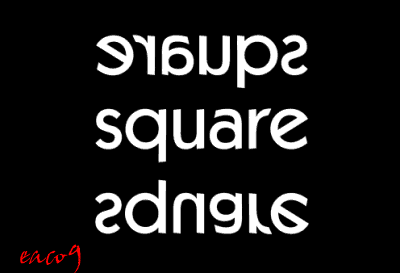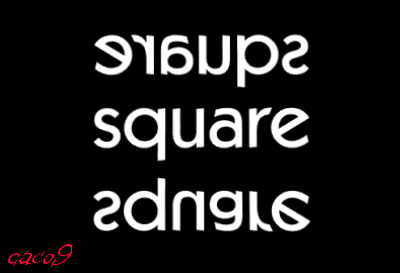
In the beginning computer art, both commercial and non-commercial, was overwhelmingly 2D, that is: graphics programs mainly rendered and manipulated images as analogues of flat images like photographs or paintings.

With the growth of 3D graphics it became possible to render images from objects in 3D, with the screen, acting as a camera, becoming a virtual window into space constructed of three Cartesian axes, X, Y, & Z. It was the great innovator John W. Sledd who first realized the full potential of using 3D programs in combination with 2D programs to do what neither of them could easily do alone.

Sledd worked mostly with still images. With animation a dimension is added to both 2D and 3D computer graphics. In this series the top image is a simple cube animated in 3D and textured in black and white. The next three animations down are different versions of the same 3D animation with motion and alteration added in a 2D program, in this case Sqirlz Lite. By combining 2D and 3D regular and irregular motion that would be difficult in either 2D or 3D is accomplished relatively simply and easily and many new animated translations, which cannot be done in any one strictly 2D or 3D program, become possible. In this case an animation from a 3D program was expanded by animation in a 2D program. The reverse is also possible as will be seen in another installment.

[copyright EAC 09]
2 comments:
Impressive work and a useful lesson-thanks for the info--and the cool visuals...Squirlz should be very happy with you for the promoting of the software here..it is excellent!
thank you, Eugene, for this interesting explanation (but i don't follow you where you say it can't be done in 1 app. while it is possible in max/maya).
looking forward to the continuation!!
Post a Comment